Research Article Open Access
Collapsible Silo for Organic and Hermetic Storage of Dry Agricultural Commodities
| Paterno C. Borlagdan1*, Rhee Cartin2, and Tom de Bruin3 | |
| 1Research and Development (R&D) Manager, Philippines. | |
| 2R &D Engineer, GrainPro Phils, Lot 46 Efficiency Avenue, Gateway Park, Subic Bay Freeport Zone, Olongapo City 2222 Philippines. | |
| 3President-Chief Executive Officer, GrainPro Phils, Lot 46 Efficiency Avenue, Gateway Park, Subic Bay Freeport Zone, Olongapo City 2222, Philippines | |
| Corresponding Author : | Paterno C. Borlagdan Research and Development (R & D) Manager, Philippines Tel: +251925279507 E-mail: p_borlagdan@yahoo.com. |
| Received July 27, 2015; Accepted Septemebr 18, 2015; Published Septemebr 24, 2015 | |
| Citation: Borlagdan PC, Cartin R, Bruin Tde (2015) Collapsible Silo for Organic and Hermetic Storage of Dry Agricultural Commodities. Adv Crop Sci Tech 3:188. doi:10.4172/2329-8863.1000188 | |
| Copyright: © 2015 Borlagdan PC, et al. This is an open-access article distributed under the terms of the Creative Commons Attribution License, which permits unrestricted use, distribution, and reproduction in any medium, provided the original author and source are credited. | |
| Related article at Pubmed, Scholar Google | |
Visit for more related articles at Advances in Crop Science and Technology
Abstract
A study on the design and development of a collapsible hermetic silo for organic and chemical-free storage of dry agricultural commodities was conducted to verify its application under open-air field condition. Two models were fabricated with pneumatic posts to facilitate the preparatory assembly for the center top loading of grain. They were filled with dry corn and initial moisture contents were recorded. One unit was covered with grain shade material (GrainshadeTM) with the ability to reflect, on average, 75% of solar radiation, whereas the other one was not covered. Both units passed the pressure decay test (PDT), which was conducted on both models to ensure hermetic condition. Oxygen levels were monitored. A faster reduction of oxygen level was observed in the grain shade-covered storage silo, with 2.1% safe oxygen level after 4 months of storage. The higher capacity collapsible hermetic silos can be used to safely store dry agricultural commodities in open air field as they are able to maintain product quality and minimize losses without the use of chemicals.
| Keywords |
| Agricultural commodities; Pest control; Grain shade; Silos |
| Introduction |
| Storage structures for bulk solids are usually called bins, bunkers, tanks, or silos. Silos are tall, cylindrical, and permanently fixed structures used for storing grains such as wheat, corn, and others. Majority of the silos are made of steel or reinforced concrete with relatively rigid structural support. There is no standard definition of these terms. Low or shallow structures for storing gravel, coke ore, crushed stone, and other materials are generally called bunkers or bins, while tall structures for storing grains and cement are normally called silos . Bins and silos are widely used in various industries, including mining, food processing, agriculture, and electric power generation. Most silos are cylindrical structure made of steel or reinforced concrete, built on mat foundations; some are elevated with structural steel frames or reinforced concrete column support. The design and development of a silo is based on the type and properties of the materials to be stored. There are inherent issues and concerns in using silos for grain storage. The more salient ones include 1) the development of hot spots due to temperature variation inside and outside the silo wall, resulting in moisture condensation and consequent grain damage by microorganisms and quality deterioration 2) the bridging or caking of stored grains over time due to fungal growth and development, resulting in unloading problems 3) explosion and bursting 4) corrosion leading to internal structure collapse 5) structural deterioration 6) thermal ratcheting 7) quaking and 8) earthquake damage [1]. Silos are fixed structures and thus cannot be easily transferred even if empty they must be disassembled. |
| Grain quality control in a silo |
| Grain quality control in a silo is normally done by aeration using fans to drive low-humidity air through the stored grain. An effective aeration controller is required to avoid re-wetting of the stored grains— i.e., to ensure that fans do not operate when the relative humidity of the air is greater than 85% [2]. Chemical pest control by fumigation using phosphine gas is a common practice as part of an integrated pest control strategy. However, poor fumigation techniques failed to achieve total kill of pests in all their life stages. Hence, pests develop resistance, resulting in ineffective chemical pest control. |
| The main objective of this research is to design and develop a commercial-type collapsible hermetic silo (CHS) with chemical-free insect and pest control capability to preserve the quality of stored dry agricultural commodities and minimize losses during storage. It must be portable and have features that address the various issues and concerns inherent in existing grain storage silos. One important consideration is that it can be installed indoors or outdoors, thus reducing the fixed investment cost in grain storage. |
| Materials and Methods |
| The theoretical and practical design considerations of silos were reviewed, including the issues and concerns of existing steel & reinforced concrete silos used to store agricultural commodities. From this information, the development process for the CHS was undertaken. |
| Theoretical and experimental approaches on the design of silos with due consideration to material characteristics have been explored. The Janssen equation (1895) with material parameters, including bulk density, coefficient of friction on the wall, and pressure ratio, made possible the calculation of wall and floor loads quite accurately. Although more than a century old, the Janssen equation is still the most widely used analytical tool for calculating pressures in silos. Wilms [3] showed that 13 design codes used the Janssen formula in determining the pressure distribution in deep vertical wall silos. |
| The said formula can be used to determine the pressure distribution in deep vertical wall silo as well as the lateral pressure exerted on a silo by granular materials. It is an exponential function of stored grain depth. |
 (1) (1) |
| where D=silo diameter (m) |
| g=acceleration of gravity (9.81 m/s2) |
| k=lateral to vertical pressure ratio (Janssen constant) |
| z=depth of grain in silo (m) |
| μ=coefficient of wall friction |
| ρ =bulk density (kg/m3) |
| σx =lateral pressure (Pa) |
| σZ vertical pressure (Pa) |
| An equation was also developed to determine lateral bin wall pressure exerted by granular materials in static equilibrium condition in circular bins: |
| Where Ph =lateral bin wall pressure (kN/m2) |
| w=specific weight of stored material (kN/m3) |
| R=hydraulic radius of storage structure (ratio of crosssectional area to bin perimeter. |
| k=the ratio of lateral to vertical pressure (Ph/Pv) |
| u=coefficient of friction of stored material on the bin wall |
| h=depth or height of stored material (m) |
| Determining the value of the constant k is quite controversial. Ketchum reported that the value of k depends on the angle of internal friction (ø) of the material. He defined k as (1-sin ø) (1+sin ø)-1. For a 27o internal angle of friction typical for wheat, k=0.376. A value of k equal to 0.60 for wheat based on an experimental study was also reported, while Jaky suggested that k is equal to (1-sin ø). Thus, for ø=27o k=0.546, but these cases used zero wall friction. Some researchers. Everts and Moysey et al. [4] have shown that k is dependent on the angle of internal friction ø and the angle of friction of the stored material on the bin wall ø’. There are two classifications of bin wall pressure: active pressure is when the bin wall is pushed outward from the bin center and passive pressure when the bin wall is pushed inward toward the bin center. The formula for k in the active case was derived as follows: |
 (4) (4) |
| Where 2β=sin-1(sin ø’/sin ø) – ø’ |
| For the passive case, |
 (5) (5) |
| For grains with 27° internal angle of friction and 17° wall friction angle, these equations will yield kactive=0.41 and kpassive=1.66. Studies on the seismic effect on silos have shown that the stored material can increase the wall pressure by three to five times the filling pressure in tall silos with a height to diameter ratio of 3−6. Maximum wall pressure was estimated to occur at 0.65 h from the top of the silo [5]. |
| Given all the issues and concerns that need to be resolved in existing silos, GrainPro, Inc. initiated the development of a 10−50-ton capacity CHS. The target specifications of the commercial CHS product were as follows: |
| 1. Portable and completely collapsible, with collapsible but rigid structural support as the first-generation CHS |
| 2. Flexible, gas-tight, and hermetic container |
| 3. Storage capacity of 10-50 tons for paddy, corn, wheat and other crops. |
| 4. Competitive cost with 5-year product warranty. |
| 1. Relative to the CHS development, the basic needs of aerobic organisms are the basis and fundamental principle used in the development of hermetic storage technology—these are oxygen, water, and nutrients. If a dry agricultural commodity is stored in a gas-tight enclosure, the organisms therein will be deprived of oxygen, will not have enough water to extract and convert nutrients from the stored product into soluble compounds, which their system can absorb. Adult insects use the limited oxygen trapped inside for respiration, converting it into carbon dioxide, a natural poison. A material with low oxygen and water vapor transmission rate was used to make a model of the CHS (Figure 1). It was studied in terms of gas tightness or hermeticity, ease of fabrication, loading, unloading, bulging due to grain active pressure exerted on the wall, and other potential problems. Gas tightness was checked using the PDT protocol. Considerations on how to assemble the silo on site without using any rigid structural support were discussed. This is made possible by pneumatic means or the use of lifting machines such as forklifts, overhead cranes, and the like. A 1-ton model with pneumatic posts was developed for this purpose and was proven to be feasible. The total weight of the materials to be lifted was used to compute the air pressure in the pneumatic posts needed to lift the 1-ton model (Figure 2a). A hermetic zipper like the one in the storage cocoon was used in fabricating the model. Closing the zipper was considered in the design of the top cover of the silo. (Figure 2b) shows the fully loaded and assembled model with the top cover attached. The pneumatic posts were designed to be retractable in such a way that they can be deflated and removed after the silo is loaded with grains. The same posts can then be used to assemble other units. Static and dynamic stability of the silo was one of the design considerations. Hence, the model was designed for top-center loading as well as central unloading from the bottom floor. Several loading and unloading mechanisms were considered, including pneumatic loading/ unloading, use of augers, and use of gravity. Target unloading capacity was 50 tons/h. The silo with its loading/unloading system must be hermetic. Another design consideration was the efficiency of space utilization, which is a function of the shape of the silo (i.e., circular base, rectangular base, and other geometric shapes). The hermeticity of the model was checked using the PDT. Protocol that has been tested and validated in actual assemblies of hermetic cocoons. An outdoor experiment was conducted with two treatments i.e. CHS models with and without Grain shade™, to determine which one will have faster rate of oxygen level reduction in the stored grain. The CHS model treatment with the faster oxygen level reduction rate was chosen as reference for the design and development of the CHS prototype. |
| Results and Discussion |
| The validation of hermeticity using a CHS model with hermetic zipper proved positive. A 1-ton CHS model with pneumatic posts and rings was made (Figure 2a & 2b) and subjected for outdoor validation experiment with two treatments: 1) with and 2) without Grain Shade™ . (Figure 3) The Grain Shade™ reflected on average 75% of solar radiation. Oxygen levels were monitored and the data recorded. The CHS model with Grain Shade™ showed faster oxygen level reduction than the one without Grain Shade. In less than a month, oxygen level in the CHS model with Grain Shade was reduced to <12% and was further reduced to 2.0% in <4 months. In the other treatment, oxygen level was >16%. At 3% oxygen level, all aerobic storage insects die, regardless of life stage [6]. (Figure 4) graphically illustrates the treatments with and without Grain Shade (lower and upper line, respectively). This result proved that the principle of hermetic storage used in cocoons is applicable to outdoor grain bulk storage in silos. A 10-ton capacity CHS with Grain Shade provision was developed and tested to confirm the results from the model study. The oxygen level inside the 10-ton CHS prototype was monitored for >80 days. The oxygen level remained stable with minimal variation at an average of 2.70% (range was 1.9−3.9%,)( Figure 5). The moisture content of the grains in the top, middle, and bottom portions of the CHS were 11.3%, 10.2%, and 10.8% (wet basis), respectively. This localized moisture content variation can be attributed to the intensity of solar radiation received at the top, middle, and bottom portions, and is consistent with the moisture content requirement for long-term storage of corn [7]. |
| From these results, the development of higher capacity (50-ton) silos was pursued. The efficiency of space utilization that determines the shape was disregarded [8]. Based on feedback from the target market, space is never a problem in bulk-handling facilities, and the most common loading equipment is the grain auger with an average reach of 4 m high. A comparison of the circular base frustum versus rectangular-base silo among the 3 m, 3.5 m, and 4 m height categories was done. The 4-m-high frustum silo with a circular base has the cheapest estimated production cost (Table 1). |
| Summary and Conclusions |
| The results of the model study suggest that the CHS for outdoor storage with Grain Shade™ provision (that can reflect 75% of solar radiation on average) can satisfy the oxygen level and moisture content requirements for long-term storage of corn. The data obtained from the CHS model study proved realistic through the actual performance evaluation and validation of a 10-ton-capacity CHS prototype where oxygen level and grain moisture content were favorably maintained for long-term storage condition. It is then logical to assume that higher capacity CHS can be developed on the basis of this study. Short- and long-term storage of other grains such as paddy, wheat, chia seeds, and others can be done using the CHS without the use of toxic chemicals. [9,10]. However, as per product design and development protocol, the higher capacity CHS must be subjected to actual performance testing, evaluation, and validation under different environmental conditions, including high day and night cyclic temperatures and normal and freezing temperatures. |
| This study has proven the applicability of hermetic principle in the GrainPro cocoon to bulk storage technology. The following conclusions were made: |
| 1. The results of the model and CHS prototype study have validated the feasibility of short- and long-term storage of grains under an outdoor environment without the use of chemicals to control storage infestation and without building a warehouse. |
| 2. Low oxygen level and moisture content stability were maintained (as necessary conditions that must be maintained for short- and long-term storage of agricultural commodities in CHS). |
| 3. Provision of Grain Shade™ is a must to attain the required conditions for outdoor grain storage in the CHS. |
| Recommendations |
| Collapsible organic and hermetic silo can be used for short and long term storage of dry agricultural commodities. However, due to the different physical and chemical properties of grains, an actual performance validation of storing a particular grain using CHS must be done to insure the safety of the stored product. |
| Hermeticity or gas tightness of CHS must be verified using the pressure decay test protocol to insure that it is hermetic enough to warrant safe product storage, and that short and long term storage conditions (right product moisture content and oxygen level) are met. |
| References |
References
- value="1" id="Reference_Titile_Link">Dogangun A, Karaca Z, Durmus A, Sezen H (2009). Cause of Damage and Failures in Silo Structures. j perform constrFacil 23: 65-71.
- value="2" id="Reference_Titile_Link">Grains Research and Development Corporation (2010). Stored grain pests: fact sheet.
- value="3" id="Reference_Titile_Link">Wilms H (1991) Criteria for evaluation of silo design codes.Bulk Solids Handling 11: 55-61 .
- value="4" id="Reference_Titile_Link">Digvir S, Moysey EB (1985) Grain bin wall pressures: theoretical and experimental. Can Agric Eng 27: 43-48.
- value="5" id="Reference_Titile_Link">Abdel-Rahem HA (2014) Response of cylindrical elevated wheat storage to seismic loading. Int J Sci Res 1: 42-55.
- value="6" id="Reference_Titile_Link">Horabik J, Molenda M (1995) Effect of filling method on radial distribution of vertical pressure of rapeseed on bottom of a model silo. ZPPNR 427 : 91-97.
- value="7" id="Reference_Titile_Link">Bucklin RA, Thompson SA, Ross IJ, Biggs RH (1989) apparent coefficient of friction of wheat on bin wall material. Trans. ASABE32 : 1769–1773.
- value="8" id="Reference_Titile_Link">American National Standards Institute (1998) Density, specific gravity, and mass-moisture relationships of grain for storage.
- value="9" id="Reference_Titile_Link">Adem D, Zeki K, Ahmet D, HAli S, M.ASCE (2009). Cause of damage and failures in silo structures. J Performance Constructed Facilities 23:2.
- value="10" id="Reference_Titile_Link">Harabik J, Molenda M (2002) Properties of grain for silo strength calculation. Physical methods in agriculture. 195-217.
Tables and Figures at a glance
| Table 1 |
Figures at a glance
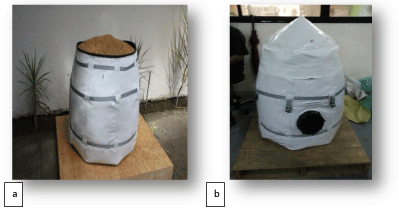 |
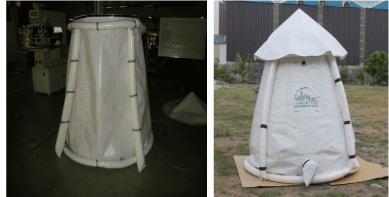 |
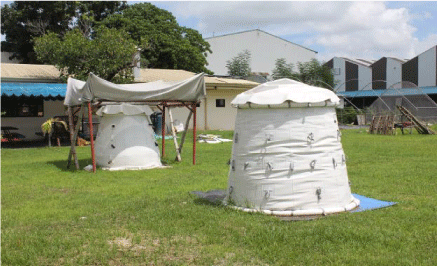 |
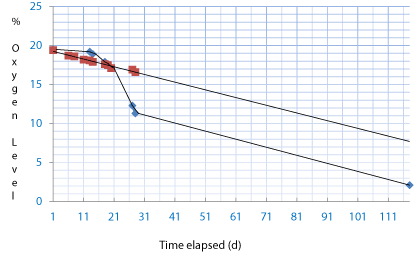 |
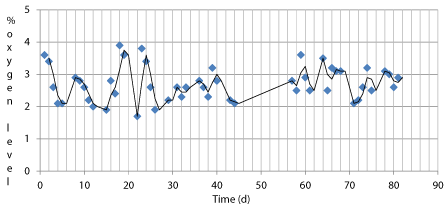 |
| Figure 1 | Figure 2 | Figure 3 | Figure 4 | Figure 5 |
Relevant Topics
- Agricultural science
- Agronomy
- Climate impact on crops
- Crop Productivity
- Crop Sciences
- Crop Technology
- Field Crops Research
- Hybrid Seed Technology
- Irrigation Technology
- Organic Cover Crops
- Organic Crops
- Pest Management
- Plant Genetics
- Plant Breeding
- Plant Nutrition
- Seed Production
- Seed Science and Technology
- Soil Fertility
- Weed Control
Recommended Journals
Article Tools
Article Usage
- Total views: 16023
- [From(publication date):
November-2015 - Jul 02, 2025] - Breakdown by view type
- HTML page views : 11277
- PDF downloads : 4746
Peer Reviewed Journals
Make the best use of Scientific Research and information from our 700 + peer reviewed, Open Access Journals
